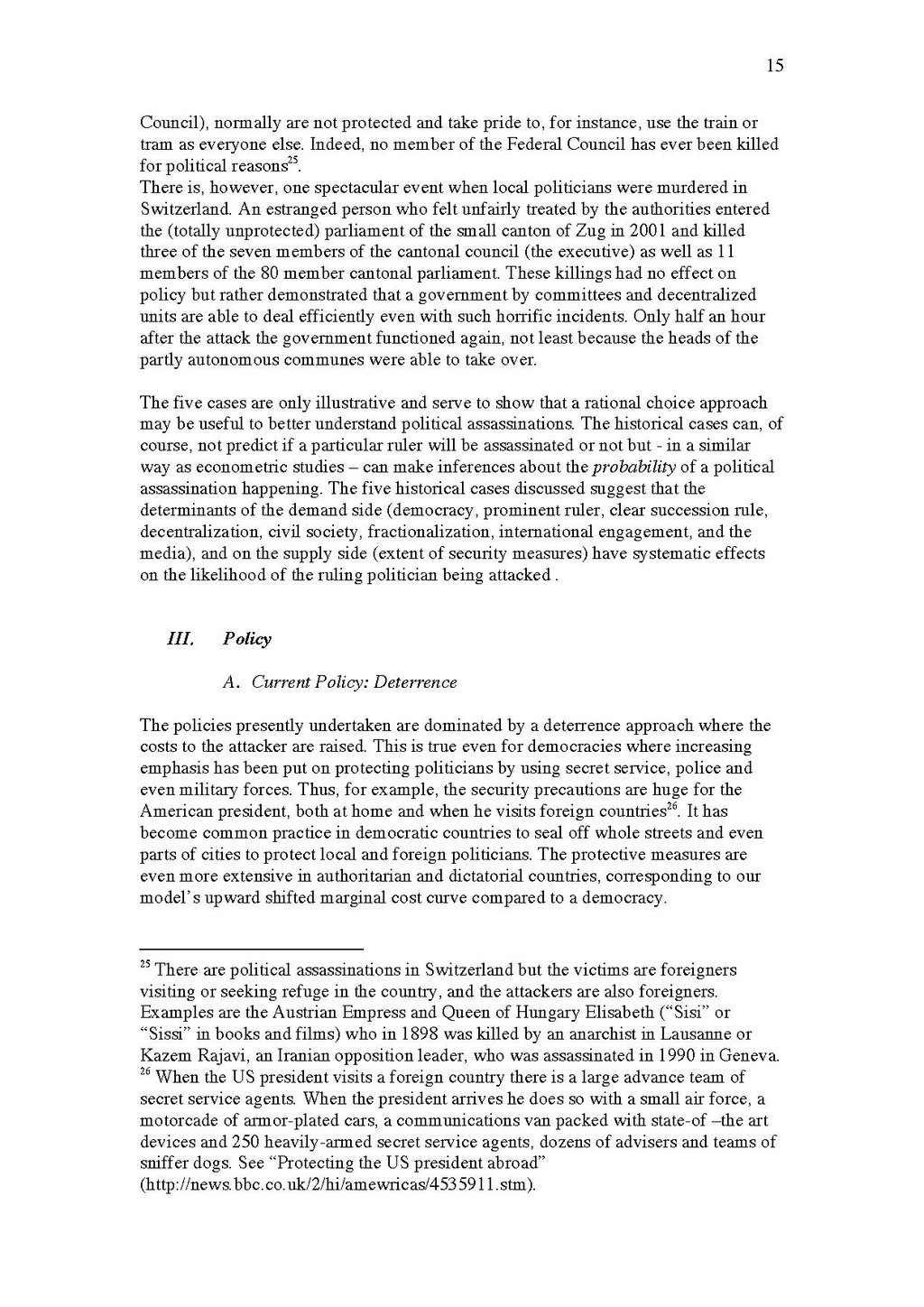Council), normally are not protected and take pride to, for instance, use the train or
tram as everyone else. Indeed, no member of the Federal Council has ever been killed
for political reasons25.
There is, however, one spectacular event when local politicians were murdered in
Switzerland. An estranged person who felt unfairly treated by the authorities entered
the (totally unprotected) parliament of the small canton of Zug in 2001 and killed
three of the seven members of the cantonal council (the executive) as well as 11
members of the 80 member cantonal parliament. These killings had no effect on
policy but rather demonstrated that a government by committees and decentralized
units are able to deal efficiently even with such horrific incidents. Only half an hour
after the attack the government functioned again, not least because the heads of the
partly autonomous communes were able to take over.
The five cases are only illustrative and serve to show that a rational choice approach
may be usefUL to better understand political assassinations. The historical cases can, of
course, not predict if a particular ruler will be assassinated or not but - in a similar
way as econometric studies – can make inferences about the probability of a political
assassination happening. The five historical cases discussed suggest that the
determinants of the demand side (democracy, prominent ruler, clear succession rule,
decentralization, civil society, fractionalization, international engagement, and the
media), and on the supply side (extent of security measures) have systematic effects
on the likelihood of the ruling politician being attacked .
The policies presently undertaken are dominated by a deterrence approach where the
costs to the attacker are raised. This is true even for democracies where increasing
emphasis has been put on protecting politicians by using secret service, police and
even military forces. Thus, for example, the security precautions are huge for the
American president, both at home and when he visits foreign countries26. It has
become common practice in democratic countries to seal off whole streets and even
parts of cities to protect local and foreign politicians. The protective measures are
even more extensive in authoritarian and dictatorial countries, corresponding to our
model’s upward shifted marginal cost curve compared to a democracy.
25 There are political assassinations in Switzerland but the victims are foreigners
visiting or seeking refuge in the country, and the attackers are also foreigners.
Examples are the Austrian Empress and Queen of Hungary Elisabeth (“Sisi” or
“Sissi” in books and films) who in 1898 was killed by an anarchist in Lausanne or
Kazem Rajavi, an Iranian opposition leader, who was assassinated in 1990 in Geneva.
26 When the US president visits a foreign country there is a large advance team of
secret service agents. When the president arrives he does so with a small air force, a
motorcade of armor-plated cars, a communications van packed with state-of –the art
devices and 250 heavily-armed secret service agents, dozens of advisers and teams of
sniffer dogs. See “Protecting the US president abroad”
(http://news.bbc.co.uk/2/hi/amewricas/4535911.stm).
III. Policy
A. Current Policy: Deterrence
